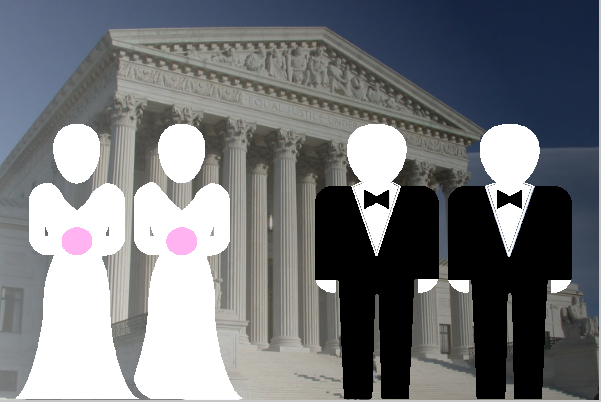UPDATE: Same-Sex Marriage has been legalized in all 50 States. More information here.
It’s been pretty hard lately not to hear about Utah’s appeal to the U.S. Supreme Court to uphold its ban on same-sex marriage. Utah Attorney General Sean Reyes and Gov. Gary Herbert, after both the federal district court and the 10th Circuit Court of Appeals struck down the ban, are seeking a final ruling on the matter from the highest court in the land.
What does all this mean though? District Courts? Circuit Courts? Appeals? We know that individuals can get lost in the in the sometimes overwhelming chaos of the United States judicial system. So we at the Law Office of David Pedrazas are going to break it down for you.
1) What law was in question? Utah’s 3rd Constitutional Amendment defines marriage in the state of Utah as consisting “only of the legal union between a man and a woman” and that “No other domestic union, however denominated, may be recognized as a marriage or given the same or substantially equivalent legal effect.” Although it defines what “marriage” in the state of Utah is, it does not affect domestic partnerships or civil unions.
2) What happened? There are certain steps that have to be taken if someone wants their case to be heard in the U.S. Supreme Court. Take yourself back to 4th grade for a moment. If you thought a classroom rule was unfair, you didn’t go straight to the superintendent of the district about it. First you would go to your teacher. The same principle applies to lawsuits in the U.S. Judicial system.
Those couples didn’t like Utah’s rule, so they petitioned the United States District Court for the District of Utah, who is like the teacher in our analogy. The District Court (teacher) said “Ok, the rule should be changed. It’s not fair,” then the other citizens (students in the classroom) said “No way! We like this rule!” So the other students (or someone they elect to represent them) decide to go to the principal, who has more power than the teacher. That’s what Sean Reyes and Gov. Gary Herbert did. They appealed to a higher court in the U.S. Court of Appeals for the Tenth Circuit. (There are 12 Circuit Courts altogether for every state in the U.S.) Circuit courts are where you go if you want to appeal a previous court’s ruling.
The 10th Circuit Court (principal) agreed with the District Court (teacher). Who else could Sean Reyes and Gov. Gary Herbert go to? Their only option was to go all the way to the top and ask the U.S. Supreme Court (the superintendent) for a final decision. No one has more power in a school system than the superintendent. Likewise, whatever the U.S. Supreme Court rules is what Utah will have to go with.
3) Who wants what? Simply put, both sides just want an answer. Both sides want the U.S. Supreme Court to answer the question about the constitutionality of Utah’s 3rd Amendment once and for all. Attorney General Reyes stated both sides purposes perfectly when he said, “All Utah citizens will benefit when the Supreme Court provides clear finality on the important issue of state authority to define marriage.” See more opinion polls from Utah Policy here.
At David Pedrazas PLLC, we pride ourselves on being able to guide you through the legal fog of today’s marriage and family law world. We know that your future financial stability or even your relationships with those you love hang in the balance. No matter what the court’s decision is, change to national and state family, divorce, and child custody laws are going to happen as a result of Utah’s appeal. When these changes happen, come to our law offices in Salt Lake City and take advantage of our Legal Case Review.


Comments